2024 ended on a lush note for me.
In December, I visited Kathlekan, an ancient swamp forest in the Western Ghats. Kathlekan, or the ‘dark forests,’ is a dense, sacred grove of primitive Myristica trees that have survived since the Jurassic era.
You could easily miss the entrance to the forest. An ordinary plain green board stood on iron legs by the side of a shiny road, with KATHLEKAN written in chalk white - a shocking underplay of the vibrant colours that teemed inside.
An ancient forest next to a modern highway perhaps needed a few tricks to protect its secrets from outsiders. The nondescript board could have been one such ploy: a device to get busloads of tourists to drive right past this treasure - like jewel thieves mistaking emeralds for dust.
The pulse of life
“Don’t touch the bark, leaves, or stones without looking at them carefully,” our naturalist guides warned before we stepped into this live ecological museum. “The microorganisms of this land are unbelievable masters of camouflage.”
The creatures of this system had outlived their need to be seen.
You could mistake a venomous Malabar pit viper for a steady tree branch and pull at it. Or a large dragonfly with propellers like a helicopter could fly inside your shirt in stealth, and you wouldn’t know till a buzz inside set you off on a stomping feat.
“With every step, we will be invading a kingdom of leeches,” our friend Arun muttered casually, raising the dread levels for me. A wetland forest pulsing with life was alive and alert to every intruder. Every move of ours disturbed the leaf litter and stirred forest creatures lying below.
I folded my arms tightly over my chest, thanked my waterproof shoes, remembered that leeches don’t cause death, and cursed myself for wearing loose, wide pants. Why hadn’t anyone prepared me for this day?
“Listen to the running stream,” Nakul urged.
The sound of water calmed me. I heard gurgles mixed with strange calls. Some were birds. “The others are frogs,” Pradeep, our guide and PhD scholar, added helpfully. He visited these wetlands regularly at night to record frog calls for his doctoral thesis.
The sighting
The first sight of the revered Myristica tree was underwhelming—a regular ten-footer held by scraggly, leafless branches. “Is there more to this ancient wild nutmeg tree?” I asked Pradeep, hopefully.
I had expected more visual drama around the world’s first flowering tree. A species preserved over a million years could not look so ordinary.
“These are just the roots, the knees of the Myristica,” Shreelok, the assistant naturalist, grinned. “Look up!”
I lifted my head. My jaw dropped. A dense canopy about 85 feet high, leaping toward the sky, had woven an intricate jali (net) of foliage in the air. Sunlight poured through the gaps in the latticework of leaves. I saw green, gold, and hues of purple.
The knee roots (that I had mistaken for the entire tree) were stilts that the Myristica had sculpted over centuries to stand firm on the marshlands of Kathlekan.
After the Continental Drift, as the swamps got more waterlogged and lost oxygen, the roots raised their heads up and learned to breathe above, not below, the forest ground. Their height strengthened their grip on the swamp.
Could this have been our earliest lesson in rising up for air? Was this how we learned the art of staying grounded?
Still and agile, static and active, solitary and beating with thousands of micro lives, the Myristicaceae of Kathlekan had spent a million years learning to adapt creatively to life.
Leech!
“Leech, leech! Madam, leech!” Niranjan, the photographer, jumped in front of me, pointing at my pants. Multiple creepies were climbing up my clothes. Multiple more were stinging my legs.
I went down in an all-out war.
I pulled the leeches off my clothes, rolled them like snot on my palms, and rubbed them to death on stones. For every leech I crushed, two more buried their suckers into my arms and drank extra milliliters of my blood before rolling up and dropping dead.
Blood spots spread across my thick borrowed socks, like ink drops on blotting paper. The slimy bastards had turned my body into a blood donation camp. In seconds, I had gone from deep musings on life to cursing and abusing the bloodsuckers that were climbing all over me.
Wonder and fear, revelation and disgust travelled side by side in these forests.
Wood wide web
Over the next two hours, we walked by the stream running through Kathlekan, navigating an obstacle course of large and tiny root systems. Not all tree roots grew vertically into stilts. A network of shorter prehistoric roots, no higher than four inches, spread horizontally across the forest floor like a carpet.
Here was a wood-wide web of inverted U-shaped roots that looped into each other, transmitting energy, signals, water, nutrients, and life force to thousands of trees. This unbroken collective had held down the earth, kept fresh water running, and generated new species in a fierce act of solidarity.
Was it love or the sheer force of survival that had moved this forest to create, protect, and preserve itself over a million years?
Sensemaking
I emerged from Kathlekan with bare feet, wet shoes in hand, and an undercurrent of awe.
That day, we witnessed the calm of a sleeping viper and the grace of a dancing frog. I saw joy and discovery on the faces of our scientist guides, who had quit their traditional jobs in cities to dedicate their lives to studying these forests.
I needed time to make sense of this experience, to dissolve the awe I felt into words, and process the sensations in my head and heart into meaning.
Questions to Kathlekan
Why had the universe sent us to this ‘relic forest’ at the close of the year when we had neither planned nor known of this site until a week before our trip?
Was it to tell us that learning to live is a million-year project?
Was it to remind us that the ‘relics’ in our environment are the most alive, alert, and connected to life?
The Myristica had spent thousands of years responding, resisting, and recasting its relationship with the ground on which it stood. Why, then, were we giving up on the soil that had shaped us?
Instructions for 2025
Lush.
Kathlekan had stayed lush by building a creative life force. To stay lush, you needed roots below and above the ground and a community that stood with you.
Was Kathlekan instructing me to take lessons in staying lush into 2025? Would I have the courage to listen to Kathlekan in this new year?
Only time and my writing would tell.
I traveled to Kathlekan as part of the retreat for the ORA India Fellowship program. The visit was a year-end gift from the artist Arunkumar HG and his fantastic team at the SARA Centre in Shimoga. SARA is a community collective that works at the intersection of art and ecology. Our time at Kathlekan could not have been possible without the naturalists Pradeep Kallahalli and Shreelok, who guided us through every step of the forest.
I clicked most of the photos in this post when I wasn’t watching my steps or fighting the leeches. A few amazing pictures (shared with due credit) are by the young photographer Niranjan.

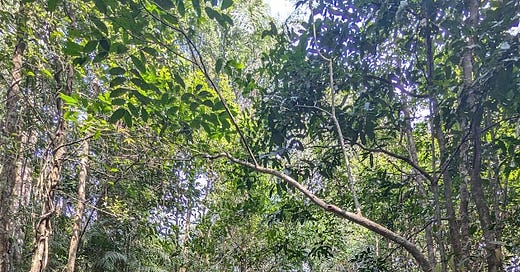



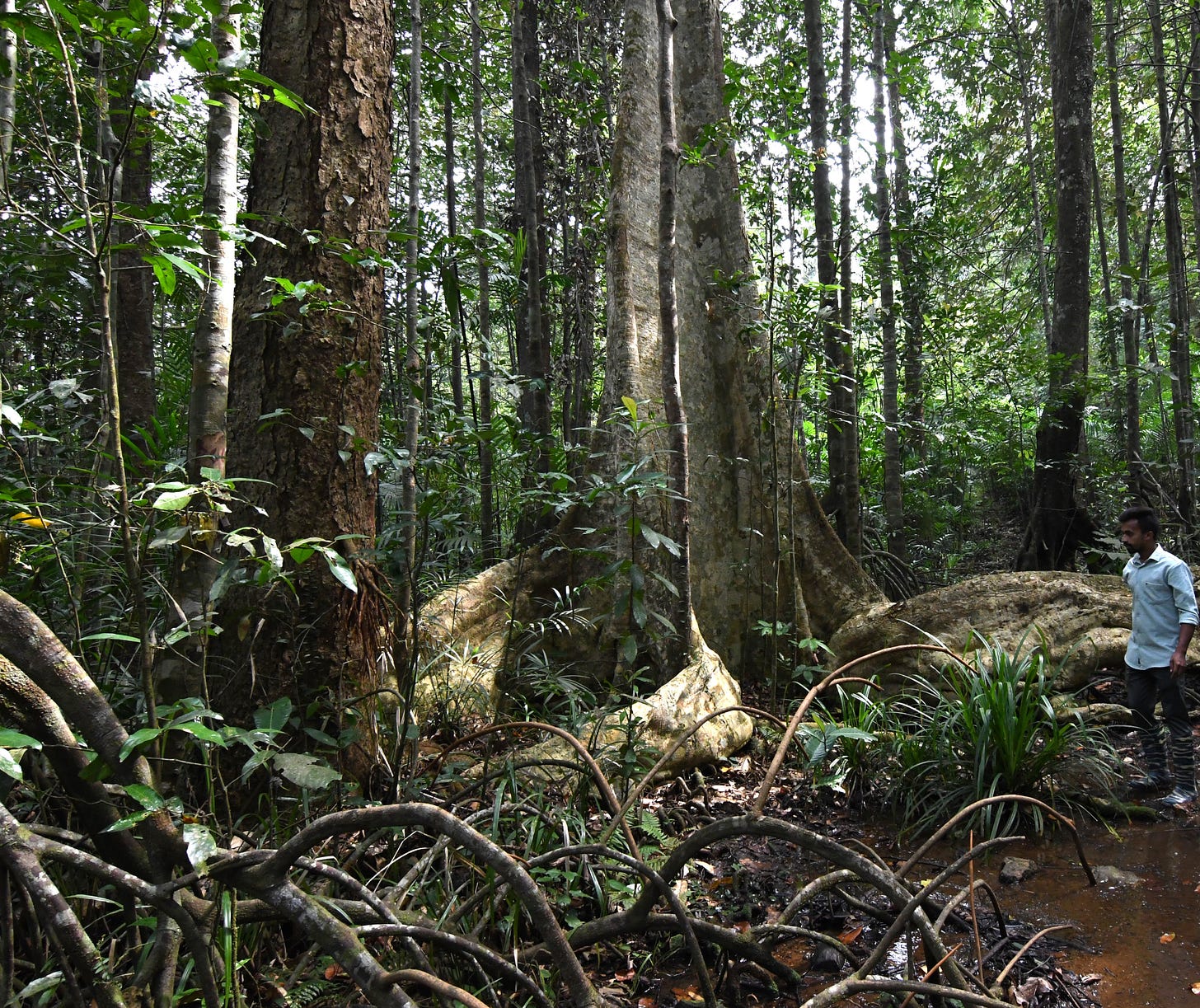
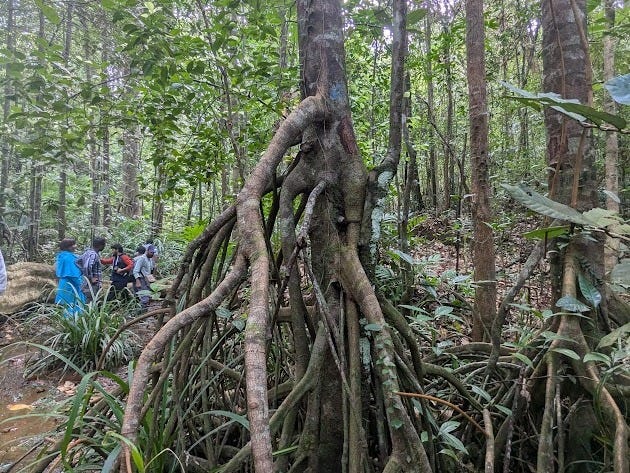
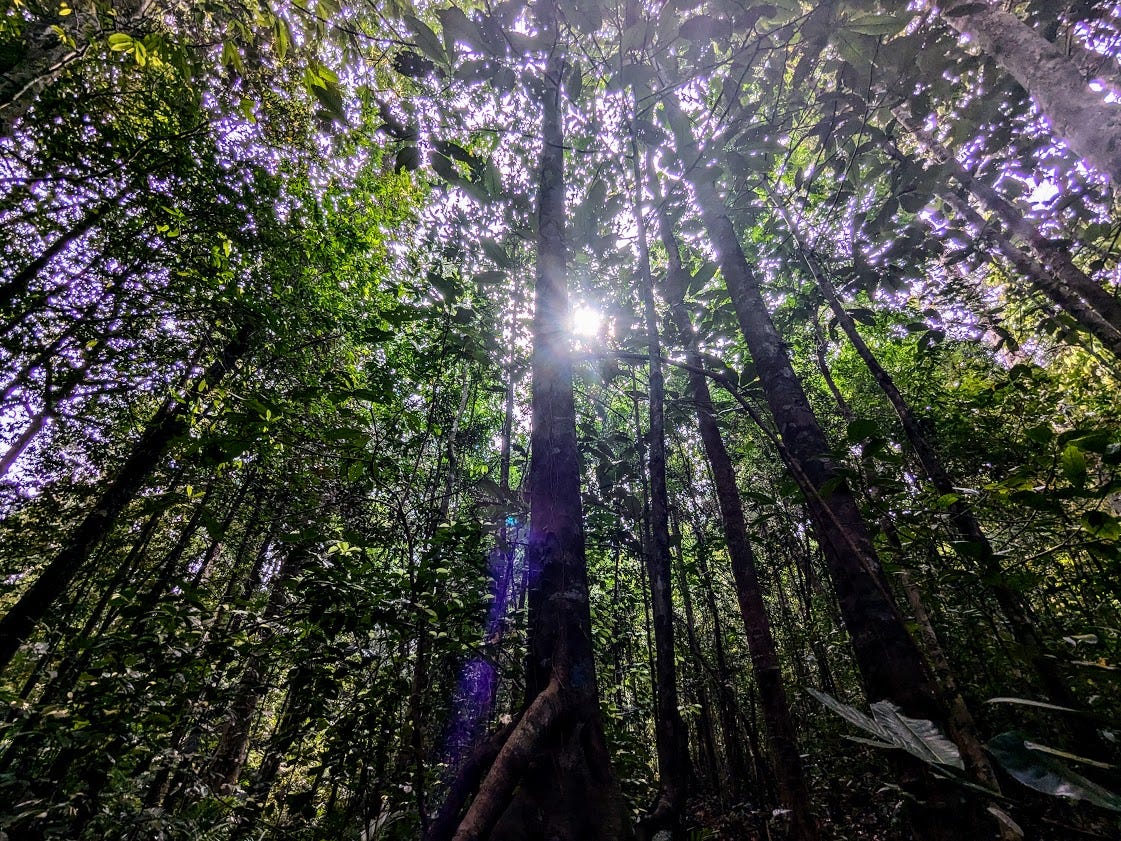

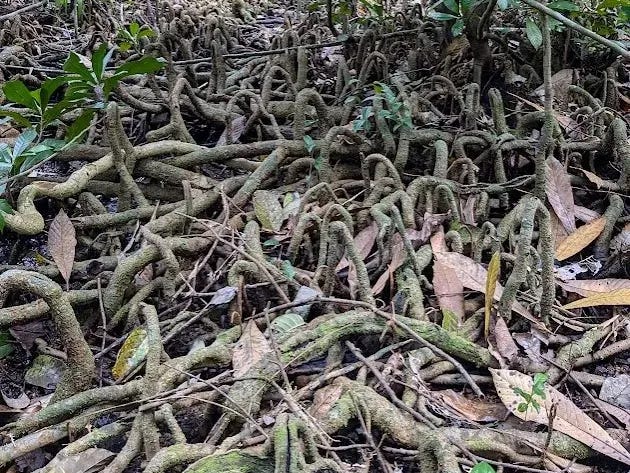
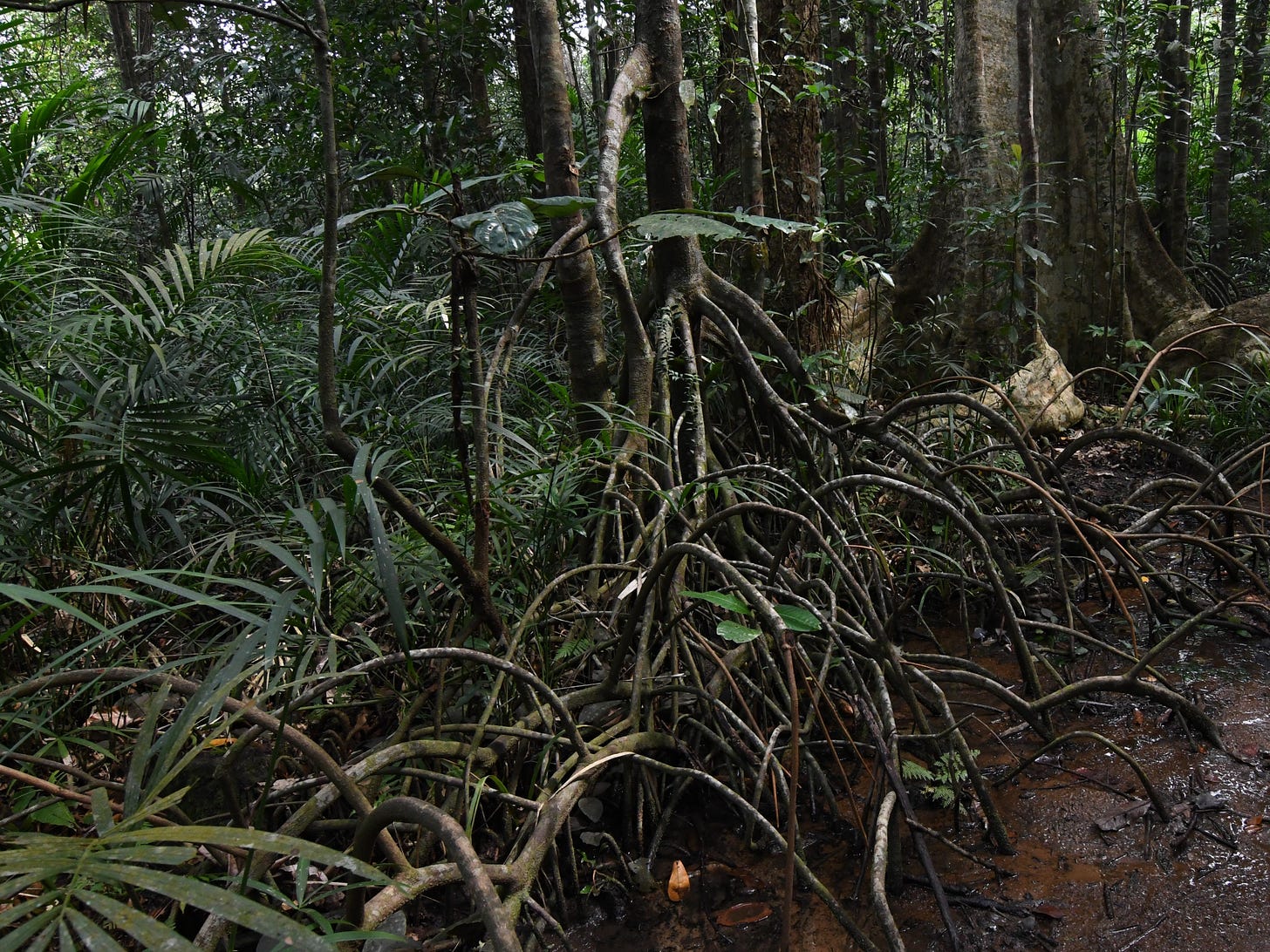

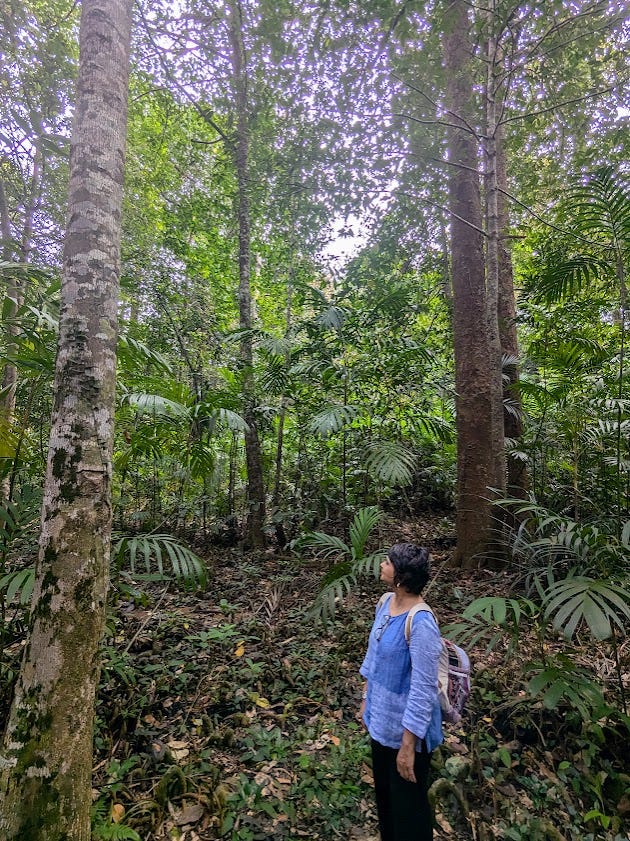
Wow! What an experience and so evocatively captured!
Thank you Manisha for the amzing view of Kathlekan through your words! Yes, I agree that our vist was distined with many unknown purposes. I still dont know how to draw the support of the universe to resist some nightmarish projects like Sharavathi Pumped Storage project just 3-4 Kms away from Kathlekan.